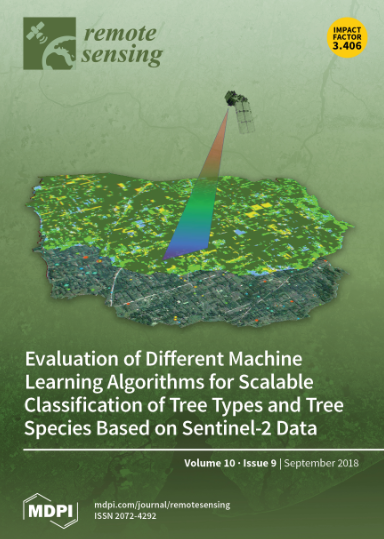2007-2009年东海浙江沿岸上升流的卫星观测
IF 4.1
2区 地球科学
Q2 ENVIRONMENTAL SCIENCES
引用次数: 15
摘要
本文利用EOS MODIS海温资料对东海浙江沿岸上升流进行了观测。选取2007 ~ 2009年夏季MODIS海温资料进行处理。基于海表温度图像中上升流的温度特征,建立了一种测量上升流物理参数的温度阈值方法。然后分析了上升流的时空特征。结果表明:上升流沿浙江沿海呈南向东北分布,平均面积为1.1万平方公里;上升流的平均温度约为25~28℃,与周围非上升流的温差在2~4℃之间。上升流在6月出现,在7、8月达到最强,9月下旬逐渐减弱。3年的观测结果表明,上升流具有短时、季节性和年际变化。上升流也与海岸地形密切相关。本文章由计算机程序翻译,如有差异,请以英文原文为准。
Satellite observation of the Zhejiang Coastal upwelling in the East China Sea during 2007-2009
In this article, EOS MODIS sea surface temperature (SST) data are used to observe the Zhejiang Coastal Upwelling in the East China Sea. MODIS SST data in summer from 2007 to 2009 are selected and processed. Based on the upwelling's temperature features in SST imagery, a temperature threshold approach is established to measure the physical parameters of the upwelling. And then the temporal and spatial characteristics of the upwelling are analyzed. Results show that the upwelling distributes along the Zhejiang Coast running from south to northeast, and covers an average area of 11,000 square kilometers. The mean temperature of the upwelling is about 25~28°C, and its temperature difference from surrounding non-upwelling waters is in the ranges of 2~4°C. The upwelling appears in June and develops to its strongest period in July and August, and then it weakens and vanishes in late September. Three years of observational results reveal that the upwelling has short-time, seasonal and interannual variances. The upwelling is also closely related to the coastal topography.
求助全文
通过发布文献求助,成功后即可免费获取论文全文。
去求助
来源期刊

Remote Sensing
REMOTE SENSING-
CiteScore
8.30
自引率
24.00%
发文量
5435
审稿时长
20.66 days
期刊介绍:
Remote Sensing (ISSN 2072-4292) publishes regular research papers, reviews, letters and communications covering all aspects of the remote sensing process, from instrument design and signal processing to the retrieval of geophysical parameters and their application in geosciences. Our aim is to encourage scientists to publish experimental, theoretical and computational results in as much detail as possible so that results can be easily reproduced. There is no restriction on the length of the papers. The full experimental details must be provided so that the results can be reproduced.
 求助内容:
求助内容: 应助结果提醒方式:
应助结果提醒方式:


